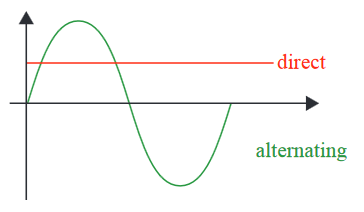HIPOT: What is it? The Hipot test (short for High Potential test), or sometimes called Dielectric Withstand test or Insulation breakdown test, is a test used to verify the strength of the insulation between the current-carrying path of a device and its chassis or enclosure. This is done by applying a high voltage (significantly higher than the device’s nominal operating voltage) from the input lines to the chassis of the product and measuring or monitoring the resulting leakage current flowing through its insulation.
Why HIPOT? The Hipot test is the most important safety test for electronics and electrical devices. The test is done on finished goods prior to shipment to detect or verify the quality of the insulation system of the product as well as detect any latent manufacturing faults. It can also be used to verify the installation correctness or otherwise of a system for field or end user applications. The theory behind the test is that if a voltage much higher than the product would typically see is applied across the insulation of the system or product without a breakdown, the product will be able to operate safely at nominal operating conditions. The Hipot basically stresses the insulation of a device or system to detect a defect in the insulation of the system or uncover shorts in isolation and/or to also detect poor grounding.
Regulatory agencies like the OSHA, the UL or the IEC required that electrical and/or electronics products coming off production lines as finished goods be tested for Hipot. The specifications for test and the pass criteria vary from product to product and/or application to application, but the common specifications require that the product be able to withstand twice the nominal
operating voltage plus 1000V. In the Solar Photo-voltaic Inverter industry for example, the Hipot criteria is governed by the UL 1741 which requires that a photovoltaic inverter system withstands twice the highest voltage the product would see plus 1000V for 60S.
Another important aspect of the dielectric voltage withstand test is that some product designs, especially in the medical device designs, require certain insulation and isolation criteria (creepage and clearance) and specifications which sometimes pose design challenges due to space constraints. The acceptable alternative to this type of space challenge is to use a component that meets the insulation withstand voltage for such isolation requirements.
Further safety reasons specific within the medical industry, but also seen in the automotive, commercial and government applications, require explosion proof testing. These applications require components or assemblies to be fully operational in an explosive atmosphere without causing sparks, arcs or other combustion effects. Medical industries have areas of high oxygen concentration, while automotive could have gasoline or other combustible or volatile fuels. It is imperative that all components and assemblies used in these applications are fully tested to the highest operational and fault conditions of voltage without arcing or leakage of any kind.
The IMS ThermaBridge™ and ThermaPlane™, with dielectric withstand voltage of greater than 6KVac (based on Size), have become perfect solutions to these types of design challenges and critical applications.
Which test voltage, AC or DC? The type of HIPOT test voltage (AC or DC) to be applied is typically governed by the requirement of the standards and applications that the product is designed to meet. AC is typically more stressful than DC of the same level and is more often required for Hipot especially for products that would normally be wall plugged and may experience grid transients. The advantage of AC Hipot is that it stresses the insulation of the DUT (Device under Test) alternately in both polarities (Plus and minus swings) unlike DC which is unipolar. Also, AC Hipot accelerates insulation breakdown in hidden defects or flawed insulation system compared to DC. On the other hand, a DC Hipot is generally preferred for non-destructive test by the gradual ramp of the test voltage and thereby controls the charging/inrush current.
AC testing is typically performed at 60 Hz in the United States to simulate standard domestic and or most commercial/industrial frequencies and applications. AC testing also adds and combines reactive eects (Capacitance and Inductance) of the device under test, (DUT) which could cause a failure not available with a DC source.

Fig 1: AC and DC Voltages
Both AC and DC Hipot have inherent advantages and disadvantages, but in general, the choice of AC or DC depends on how the product would be used and the requirement of the standard that governs such product. To get the DC equivalent of an AC test voltage, a good rule of thumb is to multiply the AC Hipot voltage by , i.e.
DC Hipot test voltage = AC Hipot test voltage * 1.414
The √2 factor is the actual dierence between the ACrms and the ACpeak; this ensures that the DC test is performed at the same level as the peak of the AC waveform.
The IMS ThermaBridges™ were tested to AC voltage (see table below), and the BG3-3725WA for example withstands up to 6KV without breakdown , in this case the DC equivalent Hipot voltage would be 6KV * √2= 8.5KV. This is more than 10 times higher than published Hipot voltage of a comparable component of similar size. This extremely high level of dielectric withstand voltage is one of the features that makes the ThermaBridge™ a suitable thermal management solution that also meets the insulation and or isolation requirement of most High-Rel designs.

• For additional information about the IMS ThermaBridge™ and ThermaPlane™, please visit www.ims-resistors.com/therma-bridge/
• For more information about HIPOT, please consult the certifying agency and standards that governs your product.
Download our tech note here.


